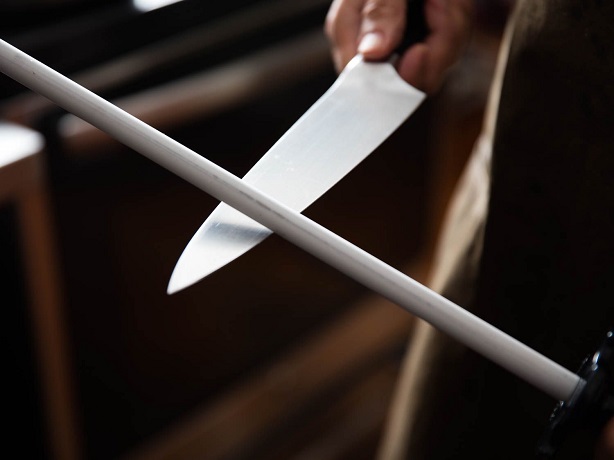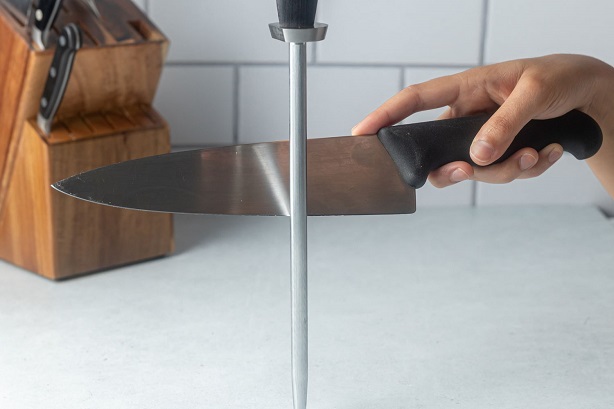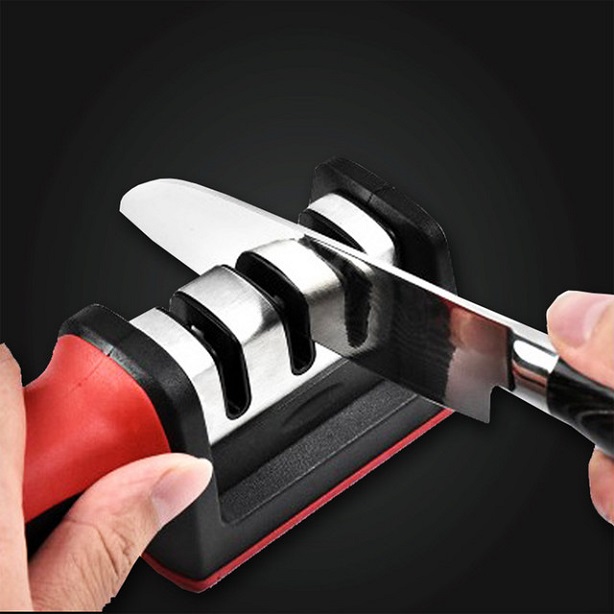Ceramic Sharpening Steels 101: The Secret Weapon in Every Chef’s Kitchen
It doesn’t matter if you’re a professional chef or an enthusiastic home cook – your tools are the primary items that will determine the success of your meals. Even if you’re preparing a simple dish with a few ingredients, not having the right tools can drastically impact the flavour, texture, and the overall outcome.
Given knives’ integral role in the kitchen – with careful slicing, dicing and chopping – it’s essential to keep them as sharp as possible. If you’re dealing with a dull blade, it can take more effort to get the job done as well as create an uneven cut. After all, who says that outdoor knives are the only ones that need sharpening? To ensure your kitchen knives are always in top condition – sharp, safe and effective – it’s worth investing in a durable ceramic knife sharpening steel.
How Does Ceramic Sharpen Steel?

Traditionally, knives are sharpened with a whetstone or an oil-based honing rod. The former uses abrasive grit to grind down and sharpen the blade, while the latter creates a smooth edge on both sides of the knife without actually sharpening it. Both are effective, thanks to their honing action that removes small amounts of metal from the surface.
However, they’re not always the most convenient options. Whetstones require water and oil for their use, while honing rods can be bulky and difficult to transport or store. Not only can this be a hassle, but the process of sharpening can also be time-consuming and messy.
The alternative is ceramic knife sharpening steel that uses a combination of fine, abrasive particles and micro-abrasives to sharpen your blades quickly and effectively without the mess or fuss associated with traditional sharpening methods. The material realigns the blade’s edge and creates a smoother surface, making it easier to cut through hard surfaces.
When you take into account its convenience, portability and high-performance sharpening capabilities – it’s easy to see why this kind of tool is gaining popularity with chefs and home cooks alike. It doesn’t matter if you have a few kitchen knives or an entire set of professional-grade blades – they offer a quick, low-maintenance solution for keeping your tools sharp and in top condition.
Factors to Consider When Choosing a Ceramic Sharpening Steel
Although selecting an appropriate honing rod is relatively easy, there are still a few factors to consider to make sure you get the best product for your needs. Sometimes, even the slightest difference in terms of build quality can turn out to be useful in the long run.
Grit Size

This refers to the abrasiveness of the material, which is measured in terms of microns. In general, a lower number means more grit and thus a finer sharpening surface – ideal for touching up knives or restoring the edges if they have become dull. For regular honing, a steel with a higher grit size is preferable since it will be gentler on the blade and require less frequent maintenance.
Additionally, the size of the grit you need will also depend on the type of knife you’re using. For instance, if you have an outdoor knife that’s typically used for chopping or slicing hard objects such as wood or bone, then a steel with a lower grit size is recommended. This can inherently take off more metal and thus sharpen the blade quicker.
Length and Shape of the Steel
The overall shape of the steel will determine how much surface area it offers for sharpening. Generally, rods with a wider diameter or longer length offer more surface area and thus provide better coverage and greater efficiency. However, you must consider storage space when making your decision – the larger the steel, the more room it will take up in your kitchen drawer or toolbox.
If you opt for something smaller or more compact, you can still get a decent amount of sharpening power as long as it has the right grit size for your blades. Look for something that’s lightweight and easy to handle, so you can work efficiently without feeling tired or uncomfortable.
Handle Design and Comfort

At the other end of the steel are the handle and grip. This is often overlooked but can make a huge difference in terms of user comfort and accuracy when honing your blades. Make sure to look for something that’s comfortable in your hand – ideally with an ergonomic shape or soft-touch material for better maneuverability.
Also, consider the design of the handle. Does it have a textured or non-slip surface to help you maintain a good grip? Is it attractively designed and easy on the eyes? It should be durable enough to endure regular wear and tear, making sure you can use your ceramic sharpening steel for years to come.
Maintenance and Cleaning Requirements
No tool is complete without proper maintenance, and ceramic sharpening steel is no exception. Regularly cleaning your steel will help extend its life by removing dirt and residue that can accumulate over time. Fortunately, most of these tools are easy to maintain and only require a few drops of oil for lubrication.
Some models come with a removable cleaning brush or magnetic base that allows you to securely attach the tool to your knife block. This ensures it’s always within easy reach when you need it and makes the sharpening process much faster and smoother. The best part is that this type of maintenance doesn’t require any special tools or expertise – it can be done in a matter of minutes with the right instructions.






